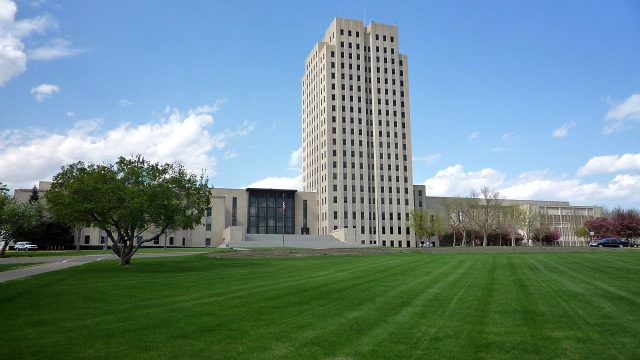Have North Dakota's State Agencies Have Figured Out That The Oil Boom Is Over Yet?

North Dakota’s oil boom is over.
In fact, it’s been over for a while. Drilling activity is down. Commerce is slowing. Workers who came here to get oil industry jobs, and related employment, are now seeking their fortunes elsewhere. While the word “bust” isn’t an accurate description, it is a significant change from the last several years. One that’s having a dramatic impact on state revenues.
But this Mike Nowtazki article about a meeting of the Budget Section in Bismarck last week makes me wonder if the people running many of our state agencies realize that the oil boom is over.
Pam Sharp, director of the Office of Management and Budget, appeared before the Legislature’s Budget Section committee to discuss (you guessed it) budget issues. During her testimony she mentioned that that the baseline budget for the next biennium (2017-2019) will be based on the Legislature’s initial budget for the current biennium.
You know, the budget that just went through a round of automatic allotments because of falling revenues.
That made one lawmaker a little unhappy, per this Mike Nowatzki story:
State agencies will be asked next month to build smaller budgets for the next biennium, but one lawmaker questioned Thursday why their starting point won’t include the budget cuts made last month to help offset a more than $1 billion revenue shortfall.
“To me it looks like we’re putting our head in the sand again,” Rep. Roscoe Streyle, R-Minot, said during a meeting of the Legislature’s Budget Section. …
Office of Management and Budget Director Pam Sharp said it’s “a given” that budget guidelines scheduled for release in April will ask agencies to scale back.
“I don’t know what that percentage will be,” she told reporters.
Whatever it is, the percentage will be based on their original appropriation for the current biennium that began July 1, she told lawmakers. Streyle questioned the rationale, given that the budget lawmakers set last spring overshot revenues by such a large margin.
“It baffles me that we’re not going to start with the base budget as it sits now,” he said.
Sharp said the 4 percent cuts were “a stopgap measure” and might not be the same cuts that agencies would choose for the long term, adding more policy discussion is needed.
“We’ll still get to the same bottom line,” she told reporters.
First, let’s admit that baseline budgeting is silly.
Budgets should be based on needs, not whatever the last budget was. I know that’s anathema in the world of government bureaucracy where many see larger departments, bigger budgets, and expanded authority as the goal, but in the real world when demand for services fall so should the budget for those providing the services.
And that’s what’s happening in North Dakota right now. Economic activity is slowing. Some workers are leaving. The boom is over, and so boom time budgets should be over too.
I think Sharp has something of a point when she said that the across-the-board allotments do not necessarily represent the best way to reduce budgets. That’s probably right. Allotments are a crap way to budget. It’s better when the Legislature can review needs, with input from the various agencies, to make targeted adjustments to budgets.
But to use a budget as baseline that was out of touch with North Dakota’s post-boom economic realities when it was passed?
That’s a mistake.
It’s ironic to me how little concern was expressed by state leaders when we were averaging a 36 percent biennium-over-biennium increase in general fund spending over the last decade, but implement a 4.04 percent allotment on state agencies and suddenly everyone has the vapors.




